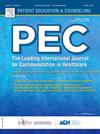How children and adolescents with chronic pain describe their pain experiences: A qualitative systematic review
IF 2.9
2区 医学
Q2 PUBLIC, ENVIRONMENTAL & OCCUPATIONAL HEALTH
引用次数: 0
Abstract
Purpose
To explore how children and adolescents with chronic pain describe their pain experiences.
Method
A systematic search of OVID Medline, CINAHL Complete, OVID Embase and APA PsycINFO (database inception to 19th August 2024) was conducted for qualitative or mixed-method studies investigating children’s chronic pain experiences. Studies were excluded if focused on post-surgical or acute pain. Two independent reviewers screened studies, and disagreements resolved by a third reviewer. Methodological quality was assessed with the CASP checklist. Data from included studies were extracted and analysed using qualitative analysis.
Results
Forty studies were included, and 4 main themes were identified: 1. ‘I’m missing out because of my pain’; in which children described frustration and isolation due to missing activities. 2. ‘Things that help me to get by with my pain’; described a variety of children’s coping mechanisms. 3. ‘It hurts and no one else understands my pain’; where children felt frequently disbelieved about their pain severity, and 4. ‘I keep trying to make sense of my pain’; in which children identified ways they seek to understand the cause and possible outcomes of their pain, including accessing health care services.
Conclusions
This review highlights how children describe their pain challenges in managing their day to day while emphasising the necessity of understanding and incorporating children’s perspectives into research and practice.
Practice Implications
This review found that children were primarily concerned by how their pain affects their day-to-day activities and highlights the need to equip children with multiple strategies and promote autonomy in managing their pain. Additionally, further research is warranted into the ways that children understand their pain experience and seek information about their pain.
求助全文
约1分钟内获得全文
求助全文
来源期刊

Patient Education and Counseling
医学-公共卫生、环境卫生与职业卫生
CiteScore
5.60
自引率
11.40%
发文量
384
审稿时长
46 days
期刊介绍:
Patient Education and Counseling is an interdisciplinary, international journal for patient education and health promotion researchers, managers and clinicians. The journal seeks to explore and elucidate the educational, counseling and communication models in health care. Its aim is to provide a forum for fundamental as well as applied research, and to promote the study of organizational issues involved with the delivery of patient education, counseling, health promotion services and training models in improving communication between providers and patients.
 求助内容:
求助内容: 应助结果提醒方式:
应助结果提醒方式:


